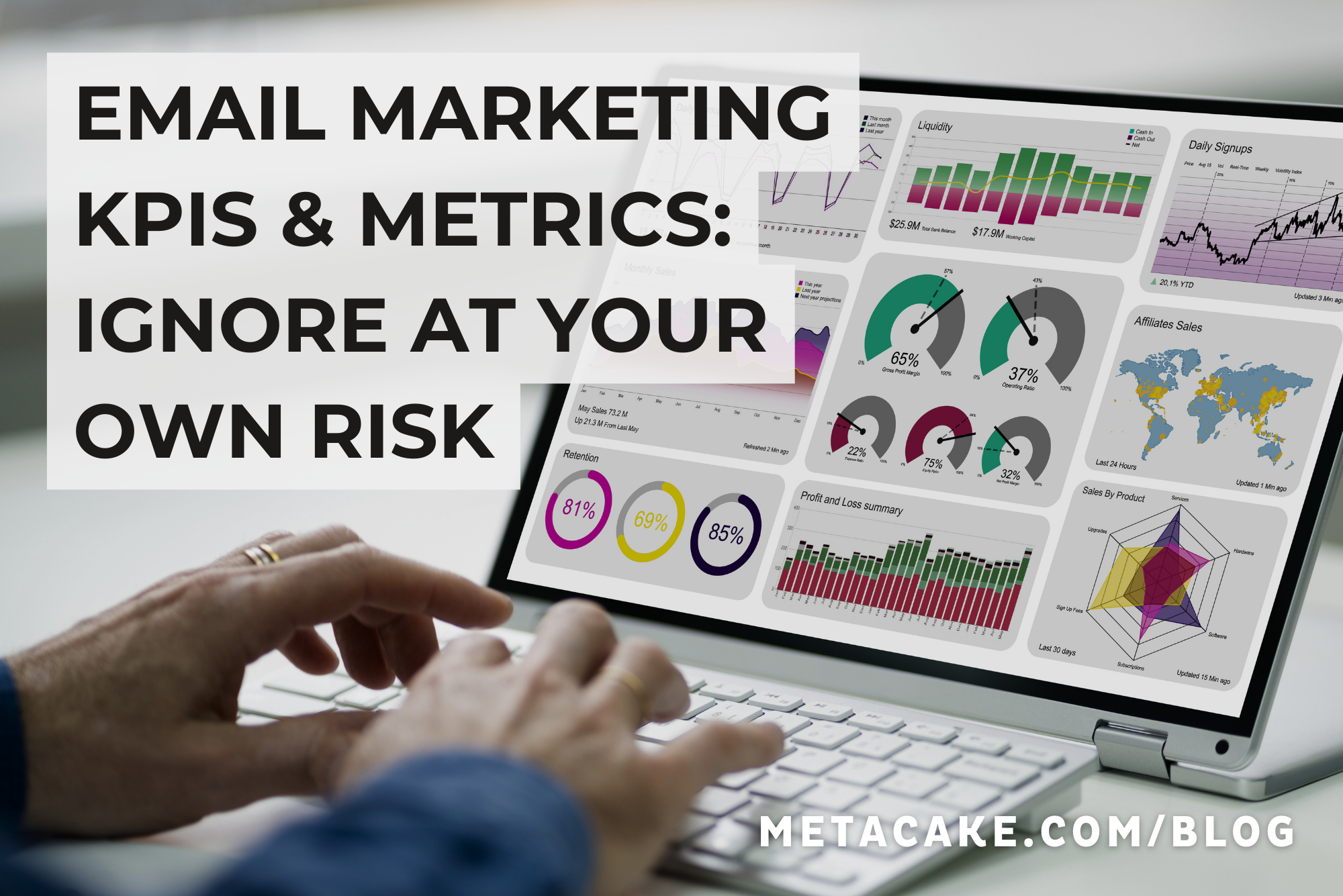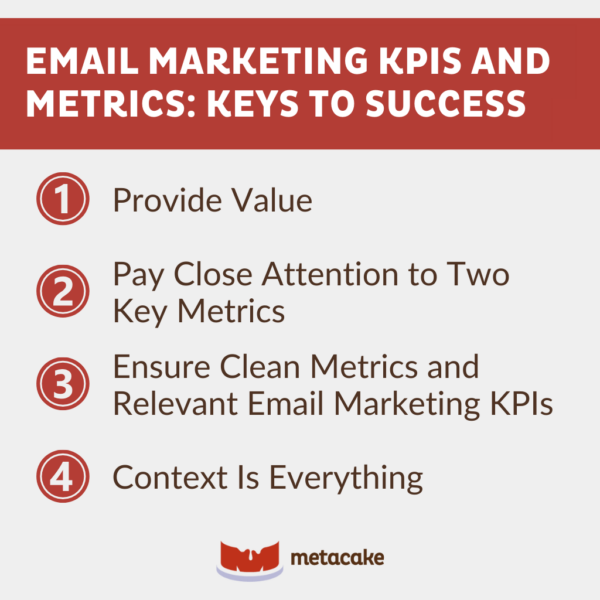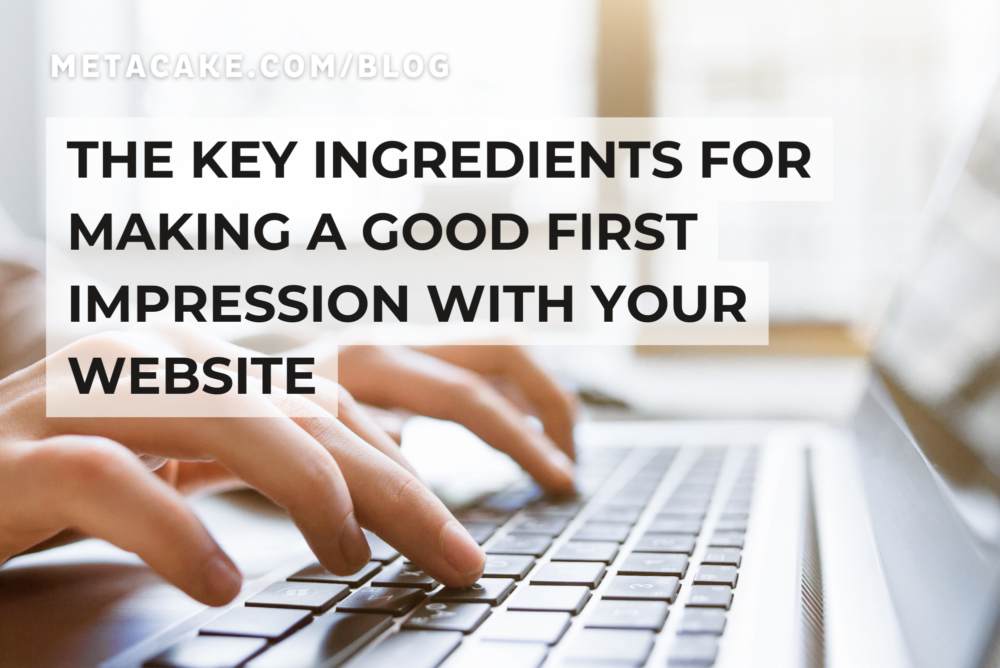
EMAIL MARKETING KPIs & METRICS: IGNORE AT YOUR OWN RISK
Social media might be the trendy kid on the block, but email marketing still has its place. In fact, email marketing has about six times the click-through rate of social media, not to mention five times more visibility.
In other words, ignore your email marketing (and your KPIs) at your own risk.
With so much information out there about email marketing best practices, where do you start? Moreover, how can you tell a successful email campaign from an unsuccessful one?

Email Marketing KPIs and Metrics: Keys to Success
1. Provide Value
The key to hitting those email marketing KPIs is to provide value in every email you send. In general, each email campaign should fall into one of three categories:
- Educational: These are the emails where you’re — you guessed it — educating people. You’re telling them more about your products, company, community, or how to attain successful results.
- Transactional: These (usually automated) emails offer a simple “Thanks for signing up for the newsletter!” or “Thank you for your purchase.”
- Marketing/Advertising: These emails contain sales pitches for products, promotions, or discounts.
No matter what type of email you’re sending, your number one goal should always be to provide value. Providing value is what turns prospects into customers and customers into repeat buyers.
Remember, every email can’t be a 50% off coupon. When you repeatedly send the same offer, you promote a level of inbox blindness; recipients don’t even need to open your emails to know what’s in them, and your email marketing KPIs go out the window.
Instead, experiment with different mixes of the email types above. Educational emails offer a great way to build a relationship with your audience, providing real value for the simple price of their attention. Marketing emails then draw customers back for more purchases.
Test out different ratios of educational, marketing, and transactional emails to see what keeps your particular audience most engaged.
2. Pay Close Attention to Two Key Metrics
The two most important metrics to keep in mind for your email marketing KPIs are engagement rate and conversion rate.
Typically, your engagement rate includes your open rates and click rates. Your conversion rate is the number of people who make a purchase based on a particular email campaign.
Of the two, engagement rate always comes first in the process — because no engagement means no conversions. Once you establish a healthy engagement rate, you can evaluate how to improve conversions and better meet your email marketing KPIs.
3. Ensure Clean Metrics and Relevant Email Marketing KPIs
First, to get a relevant, unskewed engagement rate, make sure you start with a “clean” email list.
Businesses that haven’t checked in recently sometimes find their lists cluttered with hundreds or even thousands of inactive email addresses. That not only throws off your metrics but can also cost you money and credibility with your email marketing platform! Fix this by regularly pruning your email lists of recipients who aren’t opening or interacting with your emails.
Once you have clean lists, set your email marketing KPIs. Remember that open rates, especially, vary by industry, though healthy rates usually rest in the 30–50% range. Popular email marketing platforms like MailChimp and Constant Contact compile lists of average open and click-through rates across industries to help you determine what to expect in your specific niche.
When it comes to conversion rates, one-size-fits-all numbers are pretty useless. Rather than using one industry-wide conversion rate metric across all campaigns, consider these factors to set your own personalized email marketing KPIs:
- Set growth goals based on the baseline for your business — not someone else’s. This article offers a helpful perspective on conversion rates across industries and devices. You can use it as a starting point until you figure out your own baseline to work from.
- Conversion rates vary based on the type of email you’re sending out, so one KPI won’t work for every campaign. (More on that below.)
4. Context Is Everything
The problem with how many businesses view metrics is that they don’t apply context. Different types of email campaigns require different metrics of success. For example, an educational email won’t lead to as many purchases as a marketing email, and that’s ok. It serves a different purpose.
So then, how do you set email marketing KPIs for the various types of campaigns?
With an educational email, you might consider engagement as the time recipients spend on your site after opening the email. A conversion might be the number of shares or responses, depending on the content.
With a promotional email, including a coupon, you might measure engagement by the number of opens, clicks, or shares on social media. The conversion rate would be how many recipients actually respond to the offer by purchasing and/or using the coupon at checkout.
Focus on Contextual Metrics to Hit Your Email Marketing KPIs
Learning the nuances of email marketing can seem intimidating at first, but it’s crucial to start measuring and tracking your data, even if you don’t understand it perfectly. Because you can’t manage what you don’t measure.
As you gain experience, your understanding will improve — as will your email marketing KPIs. Or, if you don’t have the time or bandwidth to devote to this rather detailed process, email marketing partners can help.
Email is one of — if not THE — the most powerful marketing channels you have. And if you don’t measure its effectiveness, it’s likely you’re throwing money away. We promise it will be well worth your time.


